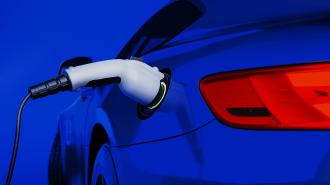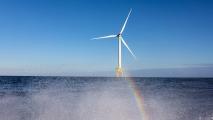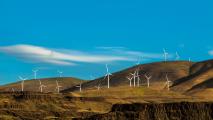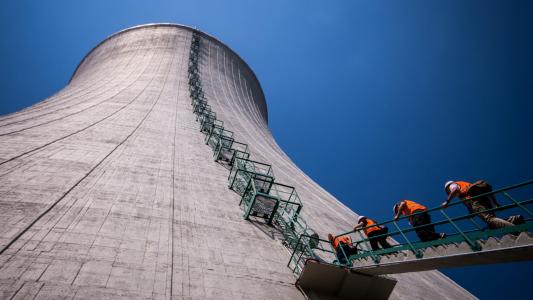This article is an installment of Future Explored, a weekly guide to world-changing technology. You can get stories like this one straight to your inbox every Saturday morning by subscribing above.
It’s 2028. It’s been one year since you bought your first electric vehicle, and the transition has gone far smoother than you expected. You’ve never come close to having your battery die on the road, and any time you’ve needed to power up, you’ve had your pick of convenient charging stations, thanks to the US’s now-robust charging network.
EV charging
At the beginning of the 20th century, electric vehicles (EVs) were actually more popular than ones powered by gas, but by the 1930s, their higher cost, slower speeds, and shorter ranges, combined with the inconvenience of charging compared to filling up a gas tank, lost them the auto market.
At the time, environmental friendliness didn’t really factor into prospective car buyers’ decisions, but we now know that gasoline emissions are a major driver of both air pollution and climate change, generating about 16% of the US’s greenhouse gas emissions. The world needs to transition away from burning gas in order to build a sustainable future.
The good news is that the EV market has been revitalized in the 21st century, but while many of today’s EVs can compete with gas vehicles in terms of performance and even cost, when they do, they’re still generally losing the battle on range and convenience. That’s discouraging many drivers from making the switch.
To figure out what will change that, let’s take a look at the history of EV charging and the tech trends that could ensure topping up your EV battery tomorrow is as convenient as filling up your gas tank today.
Where we’ve been
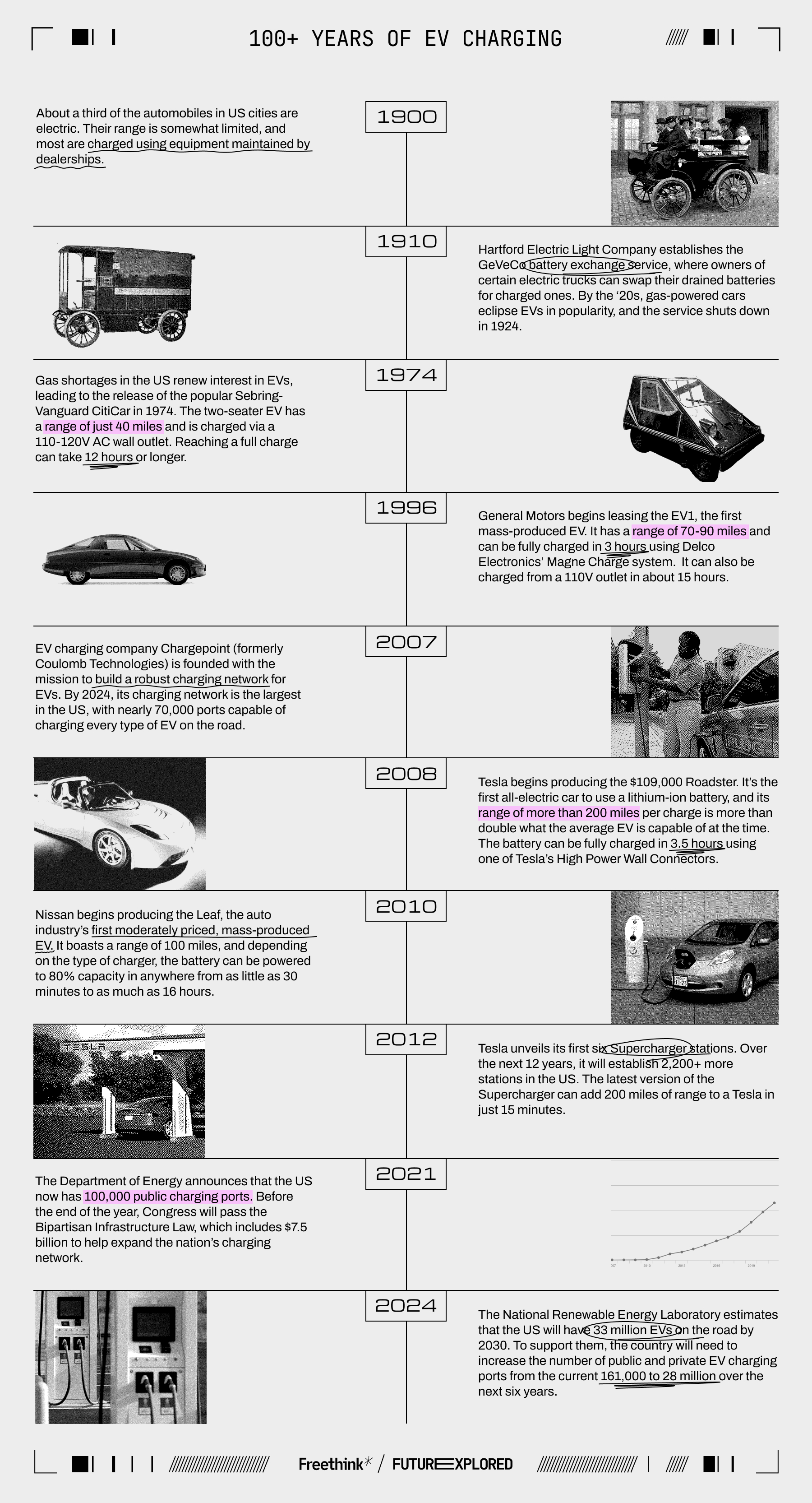
Where we’re going (maybe)
Today, there are more than 70 EV models available for purchase in the US, and Americans are buying them in record numbers — they drove home 1.2 million EVs in 2023, a huge increase over the mere 50,000 sold in 2013.
Still, that’s less than 8% of the total number of new cars sold in the US, meaning the vast majority of car buyers are still opting for gas-powered vehicles.
One of their main concerns is “range anxiety” — the fear that an EV’s battery will die before a driver can reach their destination or a charging port — combined with the inconvenience of charging.
No surprise, then, that improving charging is a top priority for automakers trying to sell more EVs and policymakers trying to get us on track to meet our climate goals.
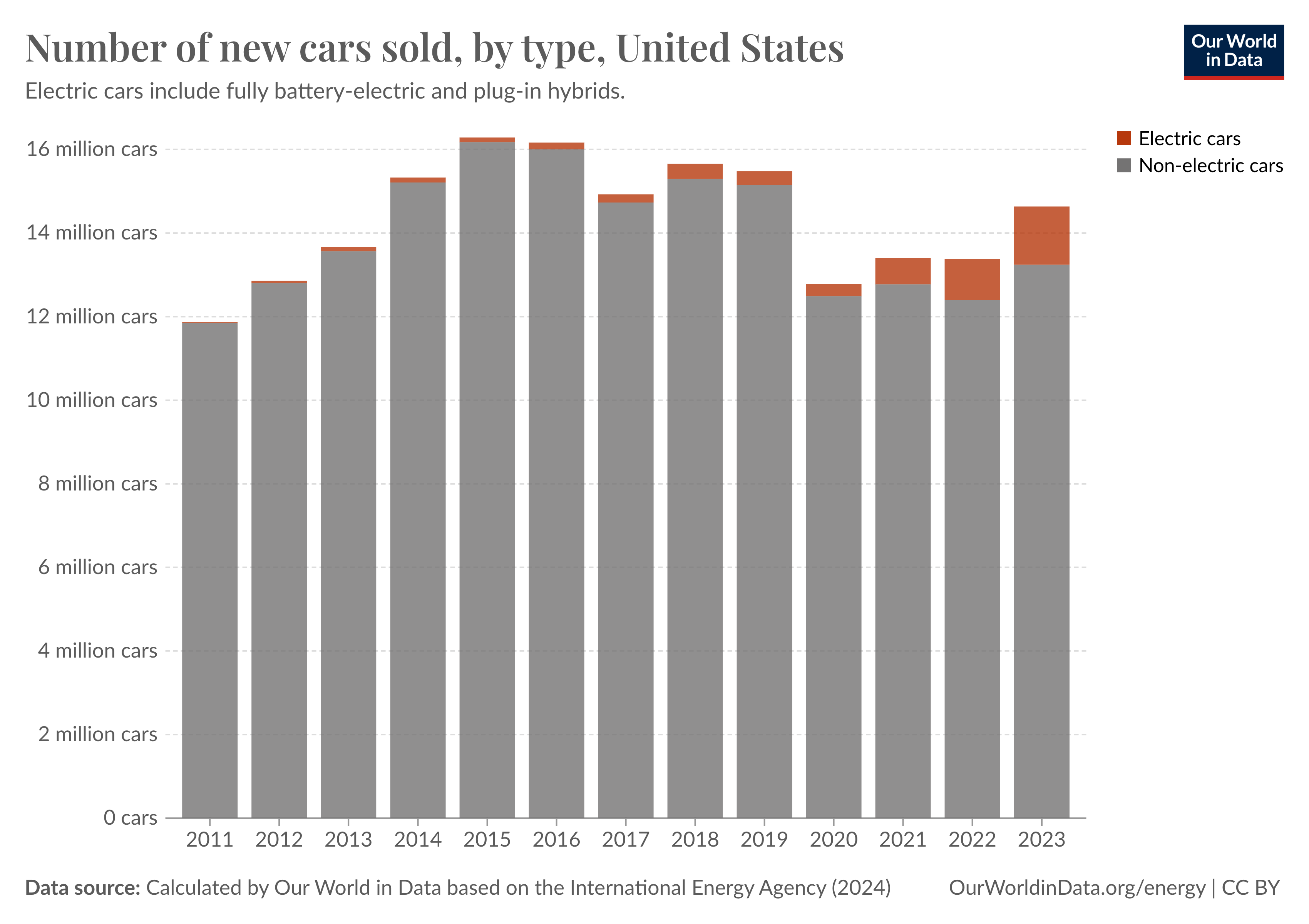
The obvious solution is developing higher-capacity batteries and more efficient vehicles. While the median range of EVs in the US a decade ago was only about 80 miles, it was 270 miles in 2023, and over 30 EV models now boast ranges above 300 miles.
That’s not as much as the median range of a gas-powered vehicle — 400 miles on a single tank — but the average driver in America drives fewer than 40 miles a day.
At that rate, they could get away with charging their EV just once a week, and if they have a charger at home, that’s potentially even easier than filling up with gas: plug in the battery at night and never worry about running out of juice.

Home charging isn’t a cure-all for range anxiety, though. First, an estimated 33% of US drivers live in places that aren’t conducive to home charging EVs, and even people who could install a home charger may have to drive more miles in a day than a full battery can handle. There’s also always a chance you forget to charge overnight and discover that on your way to work.
In those cases, you’re going to need to rely on public charging ports, and those have significant shortcomings.
While the US now has nearly 72,000 public charging stations, the vast majority are in urban areas, and this uneven distribution is holding back EV adoption — 36% of Americans live more than two miles away from a charging station, and a recent Pew survey found, perhaps unsurprisingly, that those drivers are less likely to consider buying an EV.
Even if a driver does have easy access to a charging station, topping up a battery can still be a hassle. More than 75% of America’s public charging ports are Level 2 chargers, which take 4-10 hours to charge a typical battery to 80% — fine if it’s at your office and you can leave it there all day, but an eternity compared to the few minutes it takes to fill up a gas tank.
“We’re seeing demand for fast charging skyrocket.”
Sara Rafalson
So the US needs more charging stations, in a wider range of locations, including more direct current fast charging (DCFC) ports, which can charge a battery to 80% capacity in 20 to 60 minutes if necessary. (Developing new EV batteries that can charge even faster will help, too.)
Thankfully, EV stakeholders are working on it.
According to a Bloomberg analysis of Department of Energy data, the US built 704 new fast charging stations in the second quarter of 2024 — an increase of 9% in just three months. If this pace held steady, fast charging stations alone would outnumber gas stations in the US by 2032, but — according to Bloomberg — the growth rate is expected to accelerate, meaning we should get there much sooner.
The Biden administration’s $5 billion National Electric Vehicle Infrastructure (NEVI) Formula Program is helping fuel this charging network expansion by subsidizing up to 80% of the cost of creating, operating, and maintaining fast charging ports along major highways.
As of August 2024, NEVI funding had been used for just 17 charging stations in eight states, but agreements are in place to build 2,800 fast charging ports at more than 700 charging stations across the US.
“We’re seeing demand for fast charging skyrocket,” Sara Rafalson, executive VP at charging station operator EVgo Inc, told Bloomberg. “We’re continuing to build bigger and bigger stations because we need to keep up with that demand.”
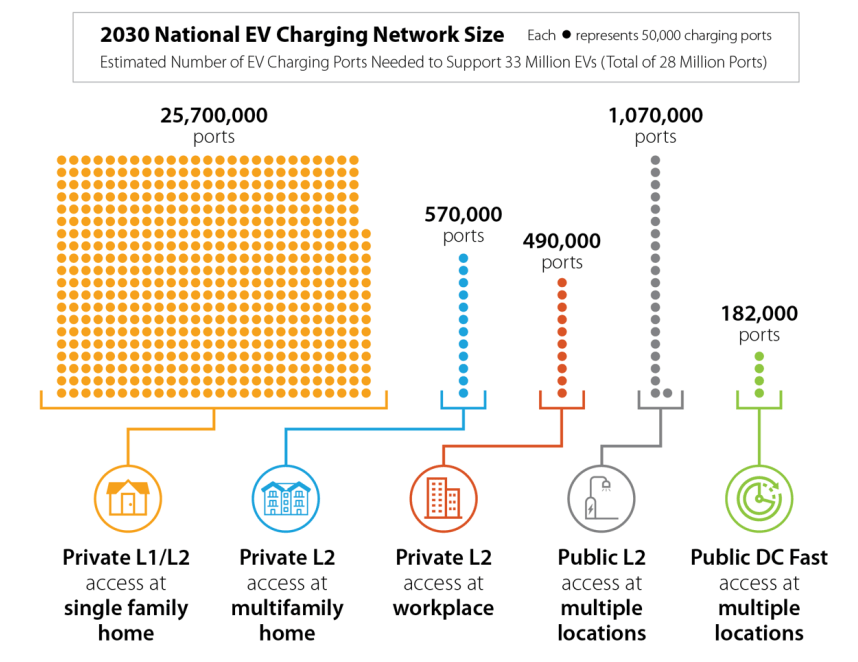
Building new stations isn’t the only option for increasing the number of fast charging ports EV owners can tap into, though.
Tesla built and operates the world’s largest network of fast charging stations, but until recently, Tesla owners have been the only people who could use them. That’s because Teslas and Superchargers use a charging standard called the North American Charging System (NACS), which is different from the one used by most other EV makers (the Combined Charging System).
In 2022, Tesla made the NACS specifications freely available to other automakers, and most major automakers have since announced plans to have NACS ports in their new vehicles starting in 2025, opening up the Supercharger network to more EV drivers.
“We’re excited to work with Tesla and to see collaborations like this help advance the world toward carbon neutrality,” said RJ Scaringe, founder and CEO of EV maker Rivian. “The adoption of the North American Charging Standard will enable our existing and future customers to leverage Tesla’s expansive Supercharger network while we continue to build out our Rivian Adventure Network.”
In the meantime, Rivian, Ford, GM, and others have started selling adapters that allow their EVs to use Superchargers. Tesla has also equipped some of its Supercharger stations with “Magic Dock” adapters that allow other EVs to use them.
“Essentially, the idea is that we don’t want the Tesla Supercharger network to be like a walled garden,” said Tesla CEO Elon Musk in 2023. “We want it to be something that is supportive of electrification and sustainable transport in general.”
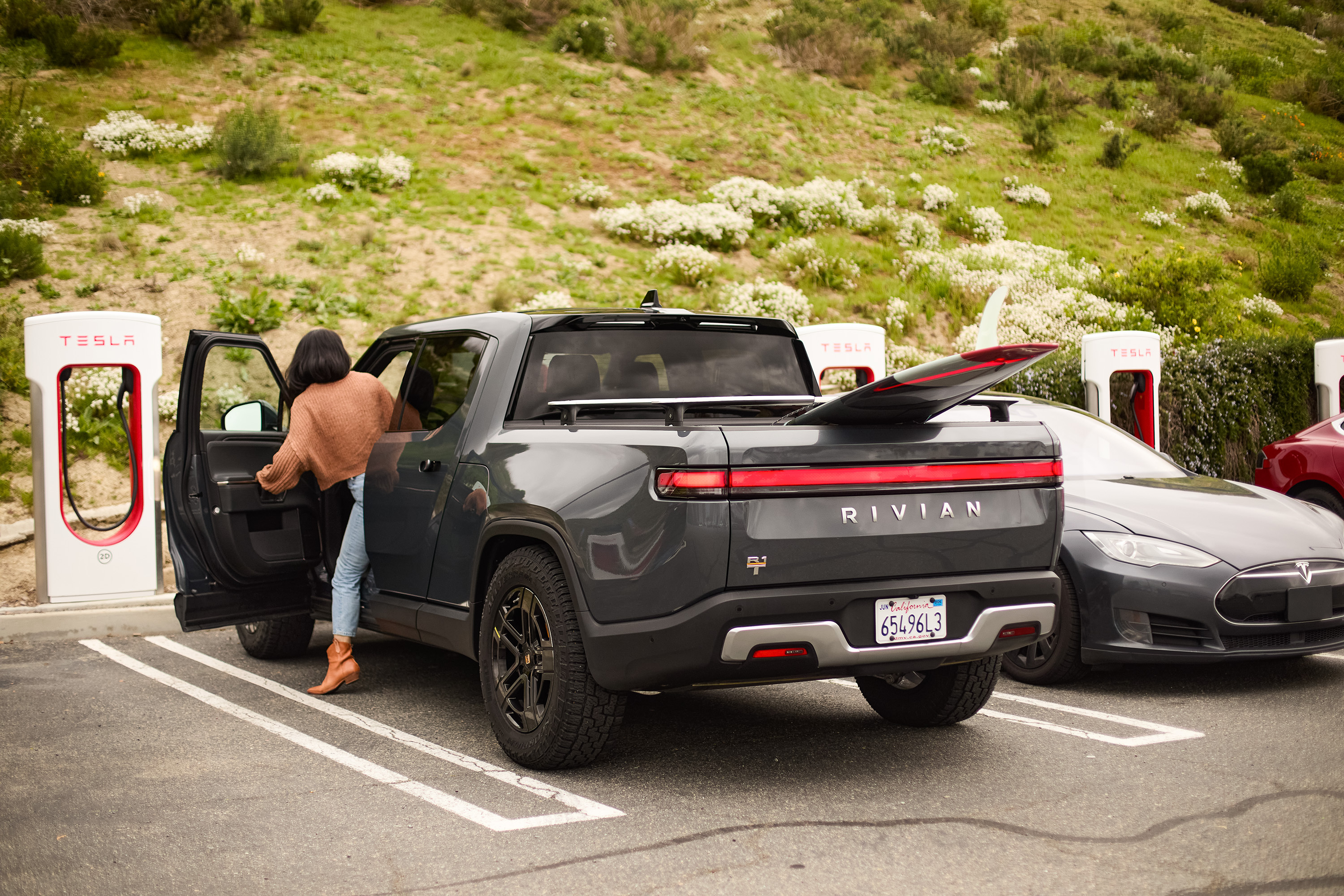
Extended driving ranges and more fast chargers aren’t the only ideas for overcoming existing deterrents to EV adoption — several more radical ideas could also help convince people to trade in their gas-guzzlers for an EV.
Wireless charging is one of them.
Tesla, Brooklyn-based startup HEVO, MIT spinoff WiTricity, and several other companies are developing systems that would allow you to charge an EV by simply parking over a charging pad — no need to bother with any heavy cords and other features that can make using a traditional charger challenging, particularly for people with disabilities. No need to worry about forgetting to plug in.
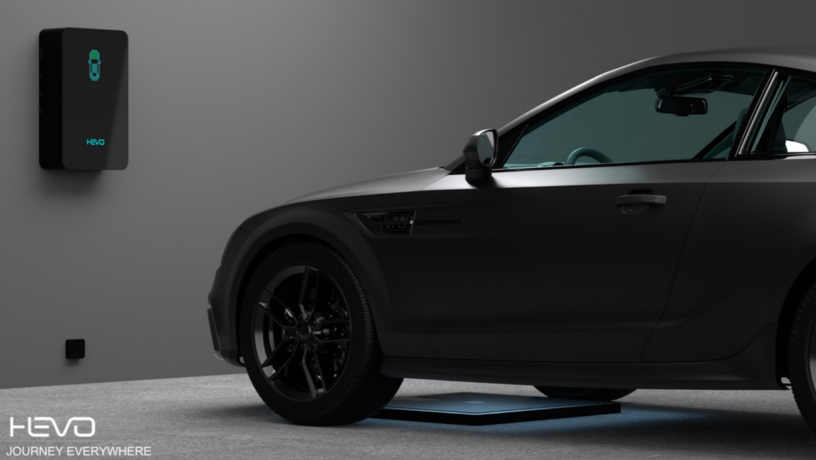
While not a new idea, battery swapping services could also make owning an EV more appealing — instead of waiting 20 minutes to charge to 80% capacity, you could pop in a full battery in under 10.
Since coming out of stealth in 2021, San Francisco–based startup Ample has opened 12 battery swapping stations in the Bay Area. After an EV pulls into the station, Ample’s tech goes to work, autonomously lifting the vehicle, removing a drained Ample battery, and installing a fresh one before lowering the EV back to the ground so the driver can exit.
“The whole vision is that we want to provide an experience that is as fast, affordable, and convenient as gas,” Hamid Schricker, Ample’s director of product, told MIT Technology Review in 2023.
Ample says its modular batteries can replace the batteries that come with any EV. So far, it’s been testing the tech with just a few models, including Nissan Leafs and Kia Niros, specifically for ridesharing and last-mile delivery, where drivers need their car ready to go quickly. But their eventual goal is to make the service available to all EV drivers.
California-based startup Aptera Motors is pursuing an even more radical idea for alleviating range anxiety and making charging more convenient: solar power.
The startup expects to begin deliveries of an ultra-lightweight, aerodynamic three-wheeled EV with more than 180 solar cells built into its body in 2025. When the vehicle is outside, these cells can collect enough sunlight to add up to 40 miles of range to the battery every day — enough to meet the needs of the average American driver. Depending on the battery option you choose, according to Aptera, you could get 1,000 miles of range off a single charge.
Aptera has begun licensing its solar tech to other mobility companies and believes its solar panels could become a common feature in EVs, but only if automakers are willing to make energy efficiency a priority.
“Range anxiety exists because most vehicles today aren’t optimized to use energy efficiently, meaning they need larger batteries and more frequent charging,” Steve Fambro, Aptera’s co-founder and co-CEO, told Freethink.
“We believe that by demonstrating how efficiency and lightweight design can transform mobility, we’ll inspire others in the auto industry to adopt similar approaches,” he added.
We’d love to hear from you! If you have a comment about this article or if you have a tip for a future Freethink story, please email us at [email protected].
